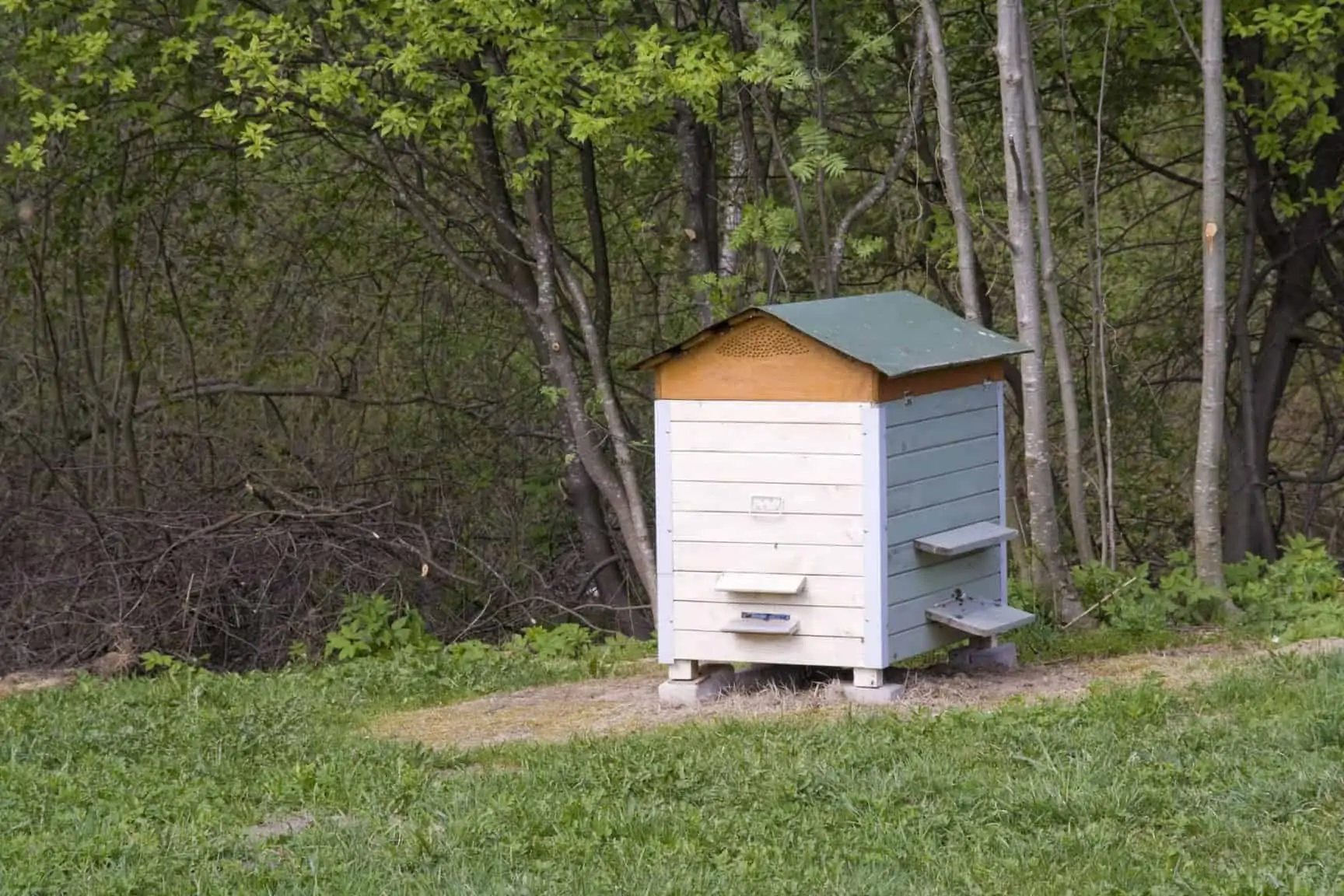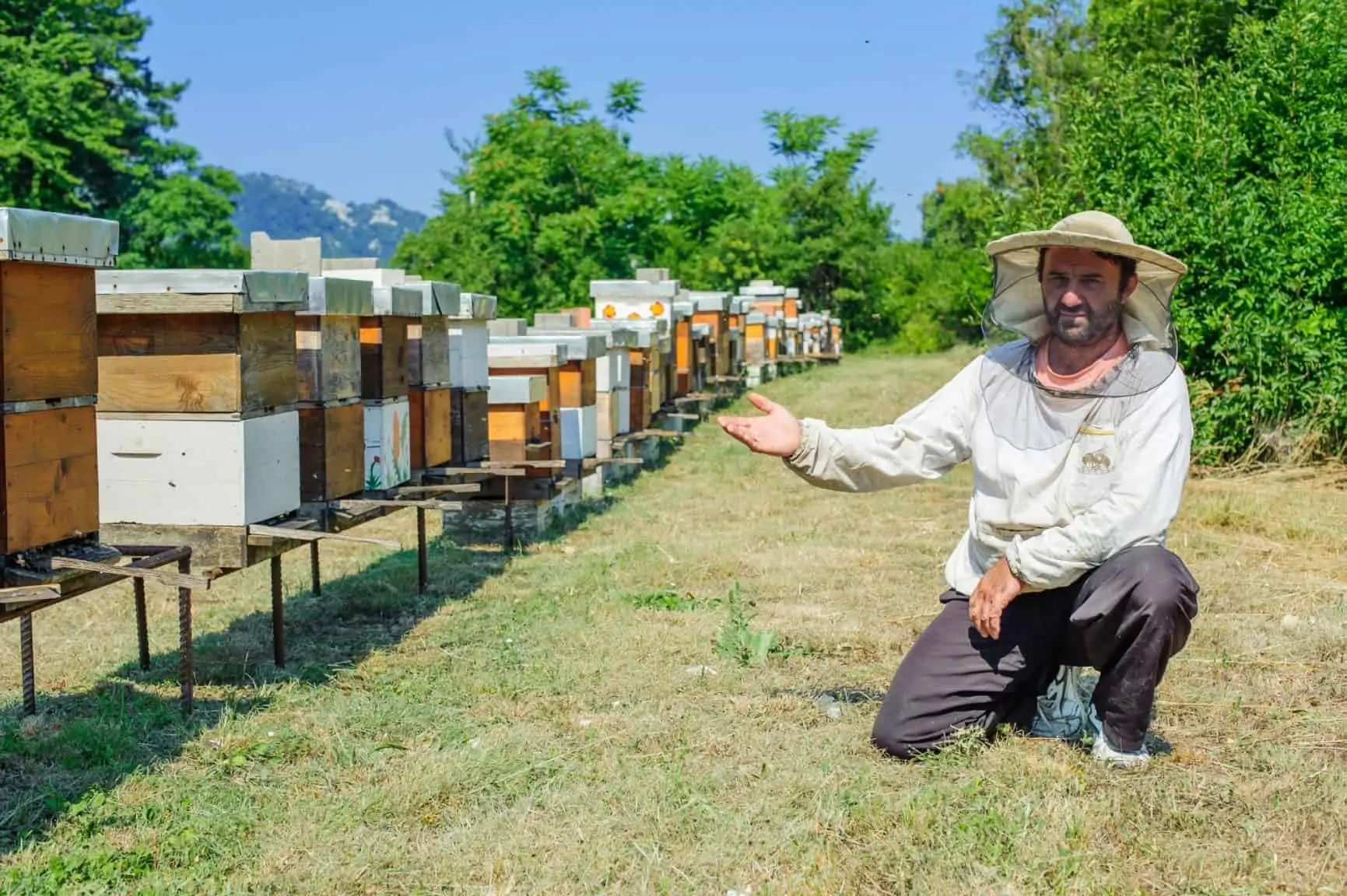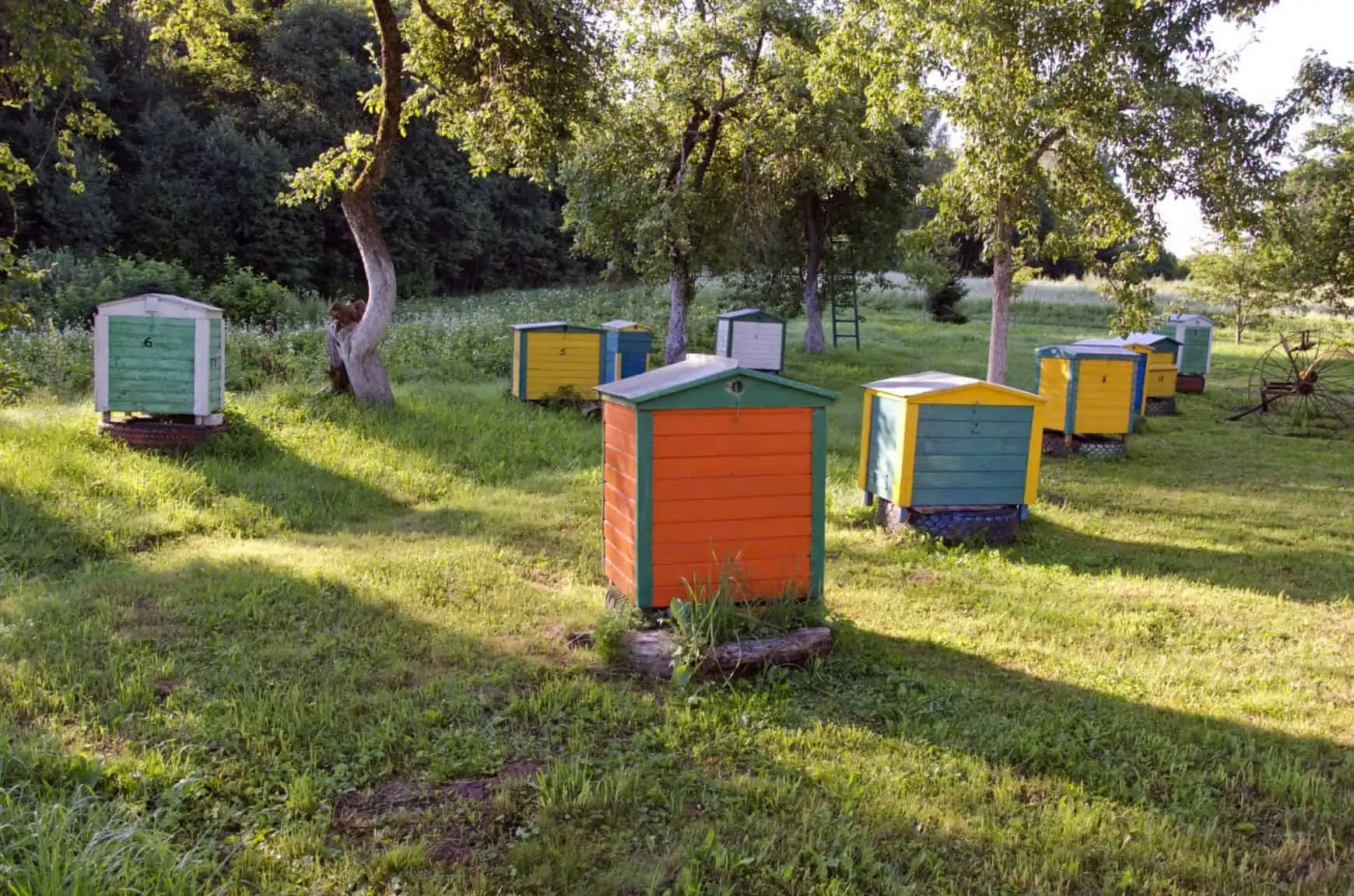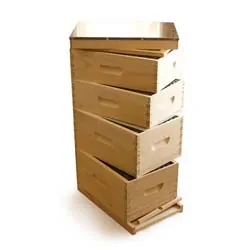Choosing the best location
You’ve made a decision on the type of hive that suits your needs. Excellent! That’s one tough decision out of the way. Next, you need to determine the best location for your hive. It’s unlikely you’ll have a spot that meets all of the bees’ ideals. The key is to find a spot that meets as many as possible. My yard has a lot of challenges and I’m still not certain I’ve found the best spot, but I am confident I will make it work.

Grade
Since beeswax is soft, gravity causes it to follow the grade of the land. To keep your bees happy with nice straight, even comb, you’ll want to find a location that is as flat as possible. This also makes it much easier for you to pull out the comb for inspection and harvest.
If the property on which the hive will be placed is very hilly or sloped, it’s perfectly acceptable to prop up the hive to make it level, just be sure that the props won’t sink, shift, or break as the weight of the hive increases with bees, comb, and honey. It’s all a lot heavier than you might think. Anticipate the prop(s) will need to hold up several hundred pounds.
Thankfully, my yard is relatively flat. The rest of the requirements are a lot tougher for me.
Environmental Protections
Wind, wet, and cold are bees’ worst enemies. Even in the warmest and driest climates, however, bees need protection from extreme heat and will need access to drinking water. In both cases, pay attention to typical wind direction, shade vs. sun areas, and any natural protective structures such as stonewalls.
In cooler, damp climates, the hive will need to be situated so that wind and rain are unable to blow in the hive door. As winter approaches, it may be necessary to put insulation around the hive. For my top bar hive, I put a length of fiber glass insulation in a environmentally friendly garbage bag and place it under the roof on top of the bars. It’s also helpful to use a VOC-free paint such as Mythic or certain Behr options to paint the roof of the hive black to pull heat in. Another option is to wrap the hive in insulating foam boards.
To give the bees additional protection from wet and wind as Jack Frost approaches, it may be necessary to wrap the hive in a tarp or build a hay bale windbreak. If you’re fortunate enough to have a place in the hive location that will provide such protections naturally, even better! Sadly, I’m not so lucky and thus far, I’ve yet to provide enough protection for my bees.
In areas that don’t experience the same brutal winters as I do in NH, it may be necessary to protect your bees from excessive heat in the middle of the summer. Using a VOC-free paint such as those I used to paint the roof of my top bar hive black to paint the top of the hive white can help reflect some of the sun. Making use of any naturally occurring shade is also beneficial.
Just like humans, bees need water to survive, just not creating damp conditions in the hive. Particularly in hot climates or during dearth, bees are not able to get enough water from nectar alone. You can make a bee watering hole very easily using a shallow bowl and glass marbles such as those used in fish tanks. Place the marbles in the bowl and fill the water just below the top of the marbles. Bees will use the soft pads of their feet to land on the marbles and drink the water without drowning in it.
Flight Direction and Walking Areas

The entrance of the hive is a busy location. Bees coming and going in a hurry. This activity extends out about three feet from the hive entrance. I refer to this high traffic area as the bee landing strip.
Although honeybees won’t sting unless feeling threatened, minimizing human interference in this landing strip area will keep you, your family, and any other human visitors safe from stings by busy workers mistaking curiosity for intrusion.
You’ll also want to be sure you can approach the hive without entering this landing strip zone and perform hive inspections without walking through it. My hive is situated with the entrance facing the woods and the rear of the hive facing the yard and house, though I may need to move it for other reasons, but more on that in a future post.
Permanence

Although it is possible to move a hive full of bees, wax, and honey during flight season, it is not recommended. Bees perceive the door of their hive as a fixed GPS point in space. Abruptly moving this will cause the bees to lose their bearings and never make it home again. Therefore, it’s important to pick a hive location with relative permanence.
Life happens, people move, and we’ll discuss how to move your hive in those circumstance down the road. What you don’t want is to put your hive in a location that is workable for warm months, but not for cool ones and would force you to have to move the hive in preparation for winter. Finding a location that works year-round will be physically easier for you and much less confusing for your bees.
By taking each of these factors into consideration when choosing a location for your hive, you ensure you’re giving your bees the best location possible. When I walked my yard looking for the best spot for my hive, I felt I was channeling the bee mind, just a little. I’m still not sure I’ve got the location right, but the bees and I will figure it out. My yard is a little tricky, and maybe yours is too. While it’s relatively flat, I’ve got a lot of shade and the because of how the house is situated on the lot, the wind and rain tend to swirl.
Even if you don’t find the perfect spot for your hive on the first attempt, keep at it and listen to your bees. Watch where they’re flying, make note of any places nearby that seem particularly attractive to them, and write it down. The bees know what they need and they’ll tell us if we’re willing to listen.
